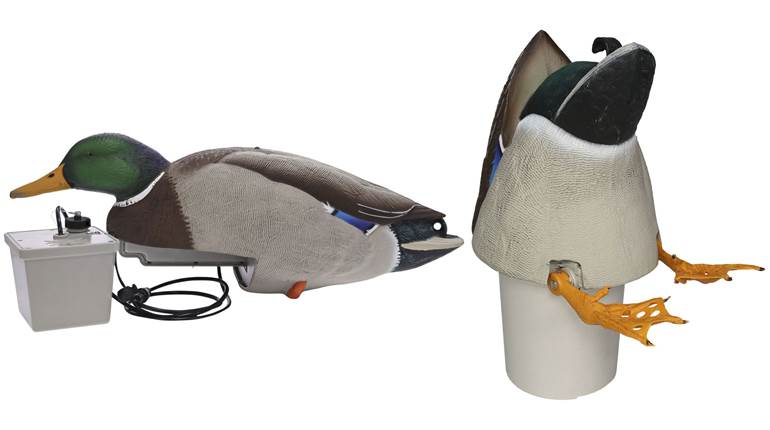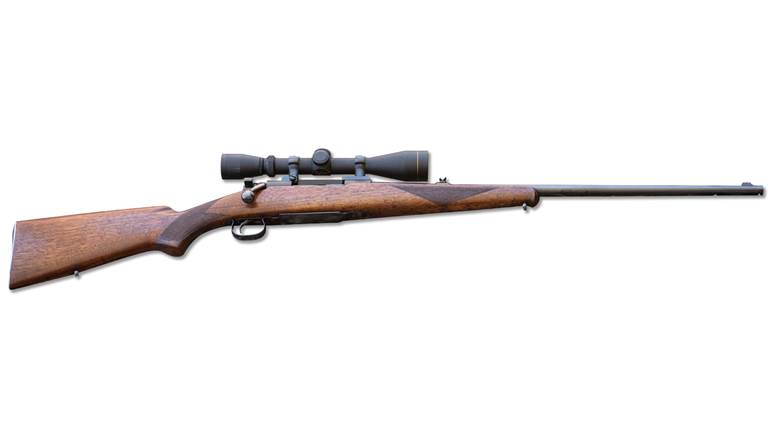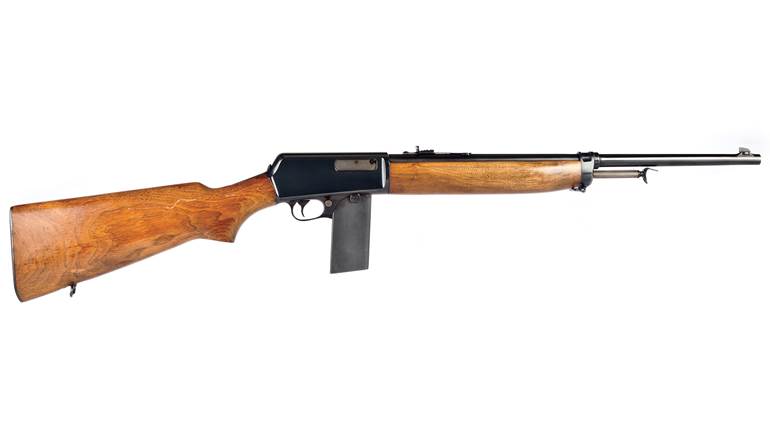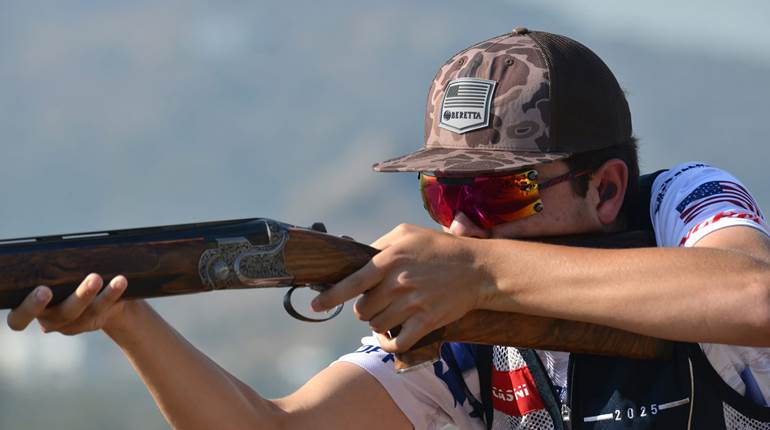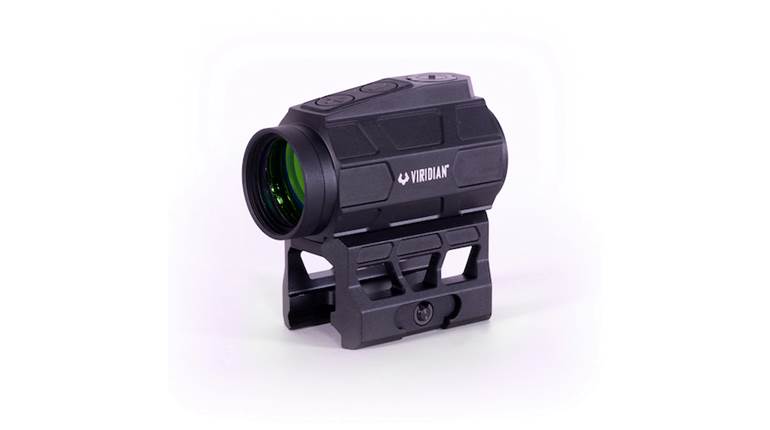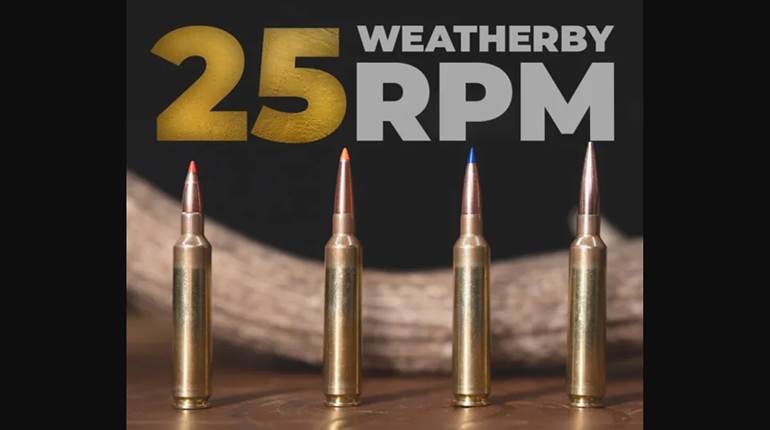
Many of us have, at one time or another, heard stories about guns or other desirable collectibles offered for sale that were “found in an old warehouse” or “in storage for 80 years” or some similar intriguing provenance. All too often, unfortunately, such claims turn out to be apocryphal tales with little or no basis in fact. On rare occasions, however, such stories turn out to be true.
A great example occurred in the fall of 2004 with an advertisement in the venerable Shotgun News classified firearms publication. The ad stated that the firm of Ivanhoe Warehouse Outlet in Nutting Lake, Mass., had just acquired a “small quantity” of genuine World War I-vintage Winchester Model 1897 “trench guns” that had been in storage for most of the last 80 years. Although not stated in the ad, the lot consisted of 74 guns. They were offered in three grades based on condition:
Grade A - $2,995 – 97 percent bright factory blue with a few small scratches.
Grade B - $2,495 – 95 percent bright factory blue with a few blemishes and scratches.
Grade C - $1,995 – 90 percent mostly bright factory blue with most of the wear on the magazine tube, action bar and handguard, some scratches on the frame. Wood shows some storage blemishes.
Also included were Model 1917 bayonets and scabbards. The prices were quite reasonable given their relative scarcity and popularity with martial arms collectors. Needless to say, the lot sold out in a matter of days. For the most part, the guns were properly graded and most purchasers were quite satisfied. Many have subsequently changed hands over the past 20 years, typically at very substantial premiums over the original sales price. The guns were a significant find as they represented something of a “time capsule” of World War I-era Winchester Model 1897 trench guns, and a brief historical overview is necessary to put the story of the Ivanhoe guns in the proper context.

In the early days of America’s active involvement in the First World War, the U.S. Army Ordnance Dept. sought to have a firearm that would assist our Doughboys in the unfamiliar environment of trench warfare. It was determined that a 12-ga. slide-action repeating shotgun with 00 buckshot would be an ideal arm for close-quarters trench combat. In order to make the guns even more formidable, it was mandated that they be equipped with a bayonet. A bayonet adapter/handguard assembly was developed to enable the shotguns to be fitted with the standard Model 1917 rifle bayonet. The guns were widely referred to as “trench guns,” although that was never an official designation. Remington made a small number of its Model 10 shotgun in a trench-gun configuration that differed from the Winchester model in several respects. The trench guns began to arrive in the battle zones of France during the summer of 1918 and soon became sought-after small arms, even though only limited numbers were available until late in the war. The trench guns gained notoriety when the Germans protested the use of such “barbaric” firearms and threatened to execute any captured American soldier with a shotgun or shotgun ammunition in his possession. The United States government responded in a forceful manner, and the Germans apparently did not follow through with their threats.
Even though the company was already engaged in the manufacture of Model 1917 rifles, Winchester ramped up production of the trench gun as quickly as possible. But the rather sudden declaration of the Armistice on Nov. 11, 1918, soon resulted in the demobilization of most of the U.S. Army, which obviously negated the need for additional arms, and the outstanding production contracts were canceled. However, provisions of the contracts typically allowed for the manufacturers to be paid for guns that were “in process” at the time of cancellation. Thus, it made sense for the companies to complete their orders rather than have the government pay for partially finished firearms. Winchester remained in production of the trench guns (and Model 1917 rifles) until early 1919.

The end of hostilities resulted in the Army having many more firearms, including trench guns, in inventory than was required to meet the foreseeable demand. Some of the trench guns were provided to the Marine Corps and the Navy along with other governmental entities such as the Post Office, Justice Dept. and Border Patrol. Even after transfer of these guns, the Army still had a surplus of trench guns, and a number were sent to several National Guard units where they generally remained in storage.
In the early 1920s, some of these trench guns were supplied to various civilian law-enforcement entities, ostensibly for potential “riot-control” use due to the domestic labor unrest prevalent at the time. One such example occurred when the National Guard Armory in Richmond, Va., was closed in 1924, and some of its Model 1897 trench guns were provided to the Richmond Police Dept. A number of these guns were subsequently used by patrol officers and marked with various identifying initials on the stock to identify the particular unit, such as TRAF (Traffic), HDQTS (Headquarters), STA. 1 (Station 1) and some simply R.P.D.
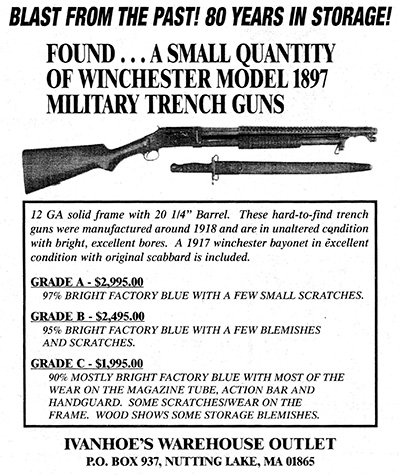
However, some of the guns were apparently never issued or stamped with the added departmental markings and remained in storage. During World War II, some of the guns were “borrowed” by the U.S. Army for security duty and then returned to the Richmond PD after the war, only to ride out most of the next 60 years in storage. In April 2004, the Richmond Police Dept. wanted to upgrade its issued handguns and arranged a trade with SIGARMS (now SIG Sauer) for the 74 trench guns to be swapped for the desired SIG pistols. SIGARMS then sold the trench guns to the Interstate Arms Corp., which marketed the guns under the Ivanhoe Warehouse Outlet name. Other than the Richmond PD markings added to some of the guns, they remained in the same configuration as manufactured in 1918/1919 and were never overhauled or refinished.
Some, if not all, of the Model 1917 bayonets supplied with the Ivanhoe trench guns represent a little-known and rather scarce variant. These bayonets are marked with only a “circled W” on the left ricasso of the blade to denote manufacture by Winchester and unmarked on the right ricasso. The bayonets made under government contract during World War I were marked with a “circled W” and “1917” on the left ricasso and a “U.S.,” flaming bomb and “eagle head” inspection stamp on the right ricasso.
It is believed that the bayonets with only the “circled W” were made by Winchester in the early 1920s for the civilian law-enforcement agencies that had received trench guns but no bayonets, since they were often in short supply in the Army’s inventory. Since these later bayonets were made for the civilian market, they did not bear any government inspection or identification markings. It may seem strange that a civilian police department would want bayonets for their shotguns, but the aforementioned potential for riot control suggests that bayonets were considered as a useful accessory.
From a research standpoint today, the Ivanhoe grouping is significant as it expanded the confirmed serial-number range of the World War I-vintage trench guns. Some researchers and collectors had maintained that Model 1897 trench guns in the 690,000-and-higher serial-number range were postwar civilian production guns—the Ivanhoe guns clearly refute this erroneous assumption, as some have serial numbers as high as the 705,000 range.

As is the case with the majority of World War I-era Model 1897 trench guns, none of the Ivanhoe guns have the hand-stamped “US” and flaming bomb markings on the receiver adjacent to the ejection port. Only an estimated 20 percent of Model 1897 trench guns from this period have these markings, and the “who, when, where and why” have not been confirmed and are the subject of much speculation today. In any event, the Ivanhoe trench guns have an unquestioned provenance as U.S. military arms and are doubly desirable since they also have an identifiable chain of custody from the U.S. Army to the Virginia National Guard to the Richmond Police Dept.
The Ivanhoe trench guns that were sold some 20 years ago proved to be a treasure trove of collectibles, but, unfortunately, the possibility of acquiring a quantity of historically significant military firearms of the World War I era is increasingly unlikely today. On the other hand, there may still be some “good stuff” still out there waiting to be discovered.
Author’s note: Thanks goes to Saul Arnstein, owner of Interstate Arms Corp. and Ivanhoe Warehouse Outlet, for much of the information contained in this article.












